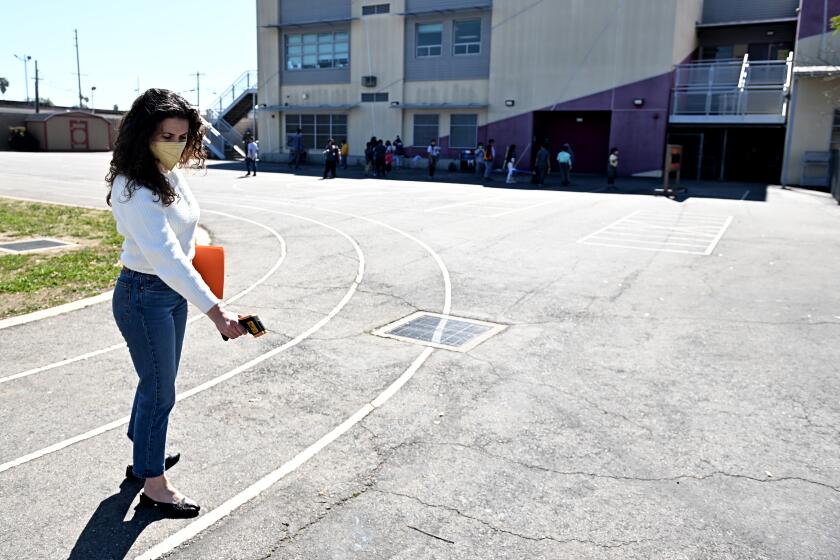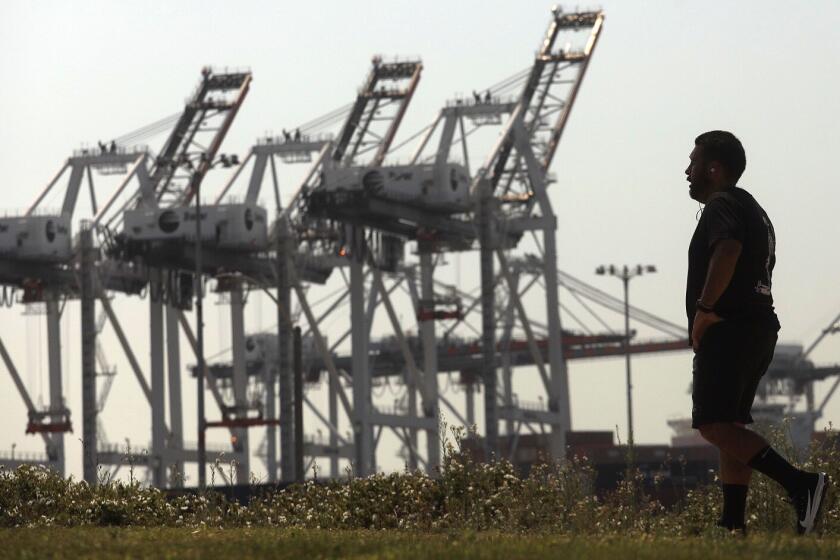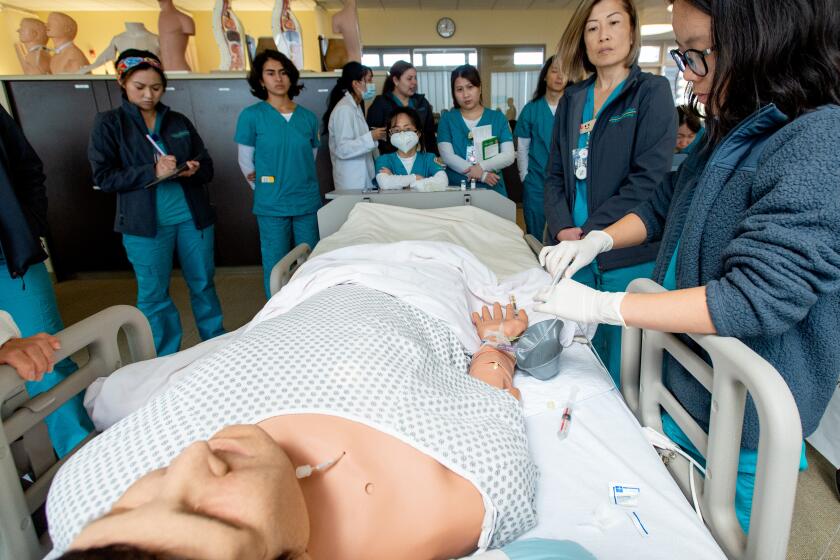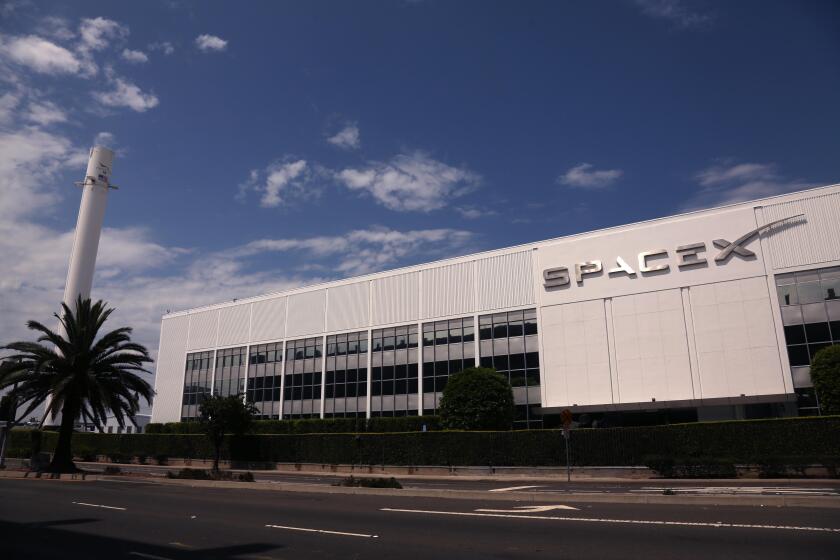Editorial: California’s next school bond should include money for grass, trees and green spaces on campuses
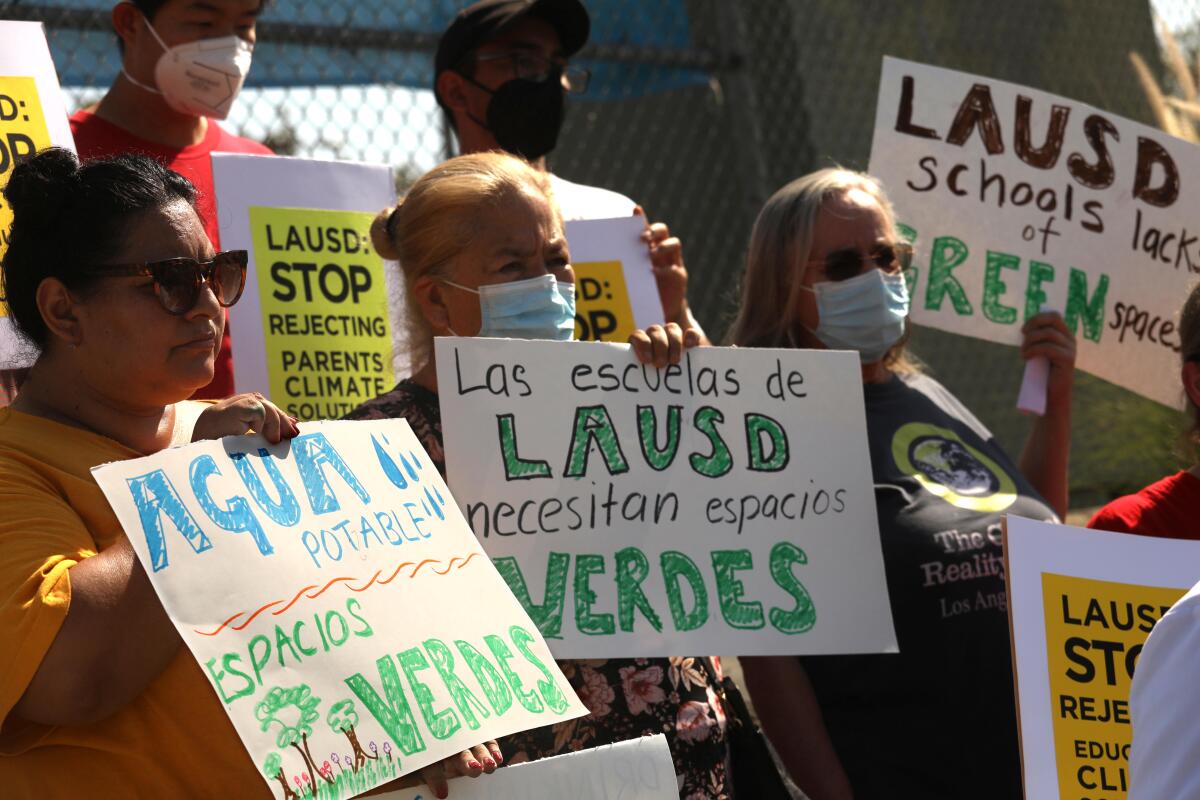
Schools should be a refuge for children to learn and play.
But many of California’s K-12 public school campuses are the opposite: hot, barren, fenced-in and paved-over compounds that draw comparisons to parking lots or prison yards. Asphalt-dominated schoolyards are not only detrimental to learning, health and well-being, they’re inhumane.
Changing that is an urgent matter as climate change drives more frequent and severe heat waves into spring and fall when school is in session. Allowing kids to be exposed to sweltering conditions, whether they are inside the classroom or outside at recess, is unacceptable in a state that calls itself a climate leader.
Children shouldn’t be forced to learn and play in hot, asphalt-covered, fenced-in campuses, especially in neighborhoods that already lack park space.
That should be front of mind as California lawmakers negotiate a $14-billion school facilities bond measure for the November ballot. Teachers, administrators, environmentalists and community groups are urging that $1 billion, or about 7% of the money, be set aside for school greening projects to remove asphalt and replace it with green space. With this approach, schools would get more than just building improvements and repairs. They’d get shade trees and shrubs, play areas with grass, boulders and logs and cool, permeable surfaces including mulch and decomposed granite that let water seep into the ground.
Legislators and Gov. Gavin Newsom are still hashing out the details of the bond proposal, including whether any money should be allocated to community colleges and public universities. The amount is likely to shrink over the next few weeks as they weigh it alongside another potential bond measure focused on projects to help communities adapt to climate change. They should make room in the school bond for campus greening projects.
The Assembly version of the school facilities bond would set aside a portion of the funds “for projects to address climate change impacts on school facilities.” But some lawmakers seem reluctant to earmark a portion of the bond for campus greening projects. They warn that doing so would take away from basic school infrastructure needs, such as upgrading antiquated plumbing, electrical and air-conditioning systems.
But the reality is that schools need to do both — modernize their facilities and green their campuses.
Workers in sweltering warehouses, kitchens and other workplaces prone to extreme heat illness face another summer without critical heat protection standards if California officials don’t move quickly to adopt and enforce new rules.
Newsom and lawmakers should see this as an opportunity to treat school campuses more holistically by funding improvements both indoors and outdoors to protect students and adapt to worsening extremes under climate change. They can show communities that they are taking meaningful action by setting aside a small percentage of this money to protect children where they spend the most time outside of their homes.
Advocates for the funding set-aside argue that school greening projects will help sell the bond measure and make voters more likely to support it at the ballot box.
They’re probably right. These projects are wildly popular with parents and the community, so much so that some schools have seen their enrollment go up after they replaced asphalt with shade trees, plants, grassy play areas, edible gardens and outdoor classrooms, according to LAUSD board President Jackie Goldberg. Other supporters include United Teachers Los Angeles and dozens of environmental justice and conservation groups.
California lawmakers have decided to shelve a measure to remove Article 34 from the state Constitution because the November ballot is already too crowded and contentious.
Voter support on a crowded ballot should be a concern. California voters rejected a similar school bond measure four years ago.
The desolate state of many schoolyards is an ongoing hazard to kids and an environmental injustice, hitting disproportionately in low-income communities of color that already suffer from a lack of shade and park space and more hard surfaces that expose them to higher temperatures.
Schoolyards with expanses of hard surfaces absorb and radiate heat throughout the campus, contributing to hotter classrooms that are linked to lower test scores and cause heat-related illnesses, dehydration, burns and other injuries. When it’s 92 degrees outside, a school’s asphalt can reach a surface temperature of 149 degrees and rubber mats around playground equipment can hit 165, hot enough to burn the skin within seconds.
Southern California air quality officials discussed port pollution at a luxury Rancho Mirage resort 100 miles from the harbor, when they should be adopting long-delaying rules for L.A. and Long Beach ports to slash health-damaging emissions.
The state already has a head start in addressing this. As part of its revamped extreme heat response plan, more than 160 California schools have been awarded a total of $121 million in state funds to design or build school greening projects. But dozens more were left out because of insufficient funding, and billions of dollars in proposed cuts to state climate efforts now cloud the future of those programs.
Years of severe heat waves and parent demands for action have forced school districts including L.A. Unified to finally get working on a problem they long neglected. Over the last few years the LAUSD board has set aside more money for these projects and set a goal of ensuring that 30% of every school’s hard-surface schoolyard space is converted to green space by 2035. But it will cost upward of $3 billion.
Lawmakers should think expansively about modernizing schools in an era of rapidly increasing climate change. It doesn’t mean just installing air conditioning but also making the campus itself cooler so kids can learn and play in the face of worsening heat.
More to Read
A cure for the common opinion
Get thought-provoking perspectives with our weekly newsletter.
You may occasionally receive promotional content from the Los Angeles Times.
